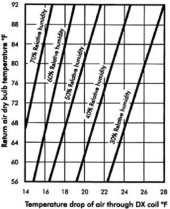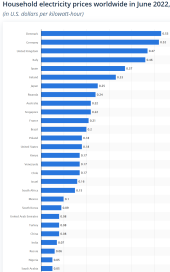Possibly it's the F22 AC deteriorating and running longer.
I assume you mean the r22 refrigerant in your a/c system?
A few years ago we discovered we had a slow leak in our a/c system when we noticed that the temperature in the house was 1 degree higher than the thermostat setpoint, which had never been the case before; the system always held the temperature right on the setpoint. The system was still under warranty so the tech came out, found the leak and brazed it closed, and recharged the system. That month our electric consumption and bill were 50% higher.
Previous to this I had built a system to monitor our energy and water consumption on a daily basis using an RPi to query the electric and water meters for the data and then send it to me via email where I logged it into a spreadsheet. I decided to modify that system to monitor the health of the hvac system as well.
Today the monitoring system consists of an RPi to fetch data from the water meters and several wifi modules to monitor total electric consumption and hvac performance by looking at compressor current, temperature near the condensing unit, inlet duct temperature and humidity, and outlet duct temperature. The system keeps track of degree days, logs every cycle that the hvac system runs, and at the end of each day it emails all of that data to me where I use an automated system to populate that data into a spreadsheet, allowing me to monitor the health and state of the system as well as our overall energy and water consumption.
I also took the course needed to pass the EPA 608 exam in order to get the certification necessary to make it legal for me to purchase refrigerant and open the system if necessary to make repairs. I learned a lot about hvac systems in the process and putting the monitoring system together and making software improvements as time has gone by has been fun.
As to your case, you probably have a leak and if it's an r22 system it is going to be expensive to repair and likely more economical to replace with an r410a system.
Consumption per year [2019 was the year the leak was discovered]
2019 - 8216 kWh
2020 - 6371 kWh
2021 - 6436 kWh
2022 - 6474 kWh








